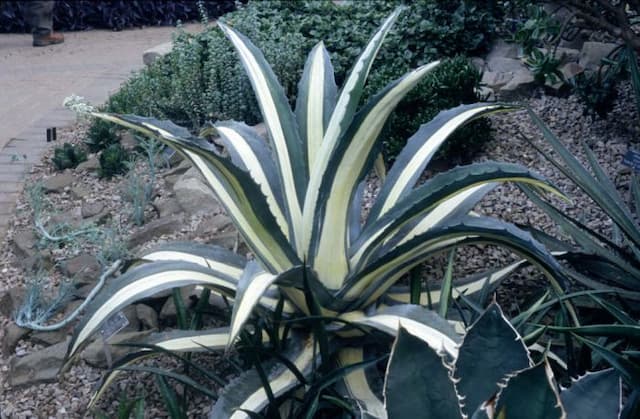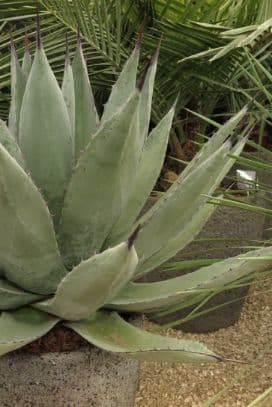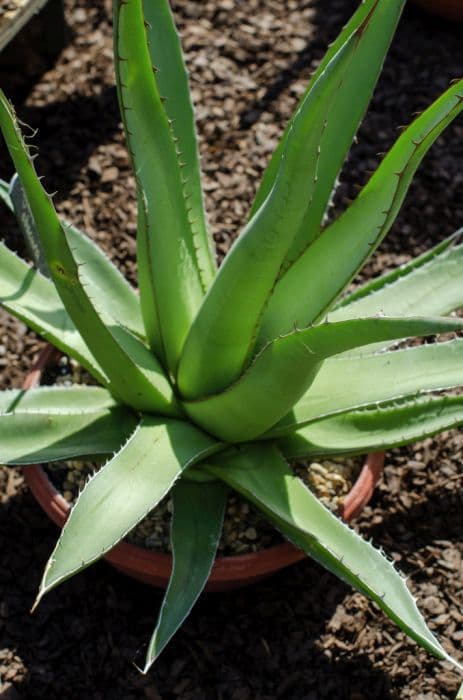White bluebell Hyacinthoides non-scripta 'Alba'

ABOUT
The plant commonly known as the white bluebell is a delicate and graceful woodland perennial. It bears a striking resemblance to the familiar bluebells but stands out due to its pure white, bell-shaped flowers which gracefully hang from one side of the stem, forming an elegant drooping effect. Each individual bloom is tubular and rolls back at the ends to form a slight curl, giving it a quaint charm that is both subtle and captivating. The leaves are narrow, lance-shaped, and have a glossy, deep green color, which provides a lush backdrop to the pristine white of the flowers. The overall impression the white bluebell creates is one of serenity and simplicity, making it a popular choice for gardens aiming to replicate a wild, natural aesthetic. The flowers are arranged in a distinct inflorescence that lends the plant an enchanting presence when in bloom. The stems are strong yet slender, supporting the weight of the flowers without detracting from the plant's overall lightness of form. The white bluebell is especially noted for its delightful fragrance, which adds a layer of sensory appeal to its visual beauty.
About this plant
 Names
NamesFamily
Asparagaceae.
Synonyms
White Bluebell, White Wood Hyacinth, White English Bluebell.
Common names
Endymion non-scriptus 'Alba', Scilla non-scripta 'Alba'.
 Toxicity
ToxicityTo humans
The common name for Hyacinthoides non-scripta 'Alba' is the white bluebell. White bluebells contain glycosides, which are toxic compounds that can cause harm if ingested. The whole plant is toxic, including bulbs, leaves, and stems. Poisoning symptoms may include nausea, diarrhea, and abdominal pain. In severe cases, consuming large quantities could potentially lead to cardiac arrhythmias or neurological effects, such as dizziness and disorientation.
To pets
The common name for Hyacinthoides non-scripta 'Alba' is the white bluebell. White bluebells are toxic to pets due to the presence of glycosides. If a pet ingests any part of the plant, symptoms of poisoning may occur, including vomiting, diarrhea, lethargy, and in some cases an increase in heart rate or respiratory issues. Large amounts can lead to more severe symptoms, such as tremors or seizures. It is important to prevent pets from chewing or ingesting this plant.
 Characteristics
CharacteristicsLife cycle
Perennials
Foliage type
Deciduous
Color of leaves
Green
Flower color
White
Height
1-1.5 feet (30-45 cm)
Spread
0.5-1 feet (15-30 cm)
Plant type
Bulb
Hardiness zones
3-8
Native area
Europe
Benefits
 General Benefits
General Benefits- Ornamental Value: The Bluebell 'Alba' is known for its attractive, bell-shaped white flowers, adding aesthetic appeal to gardens and landscapes.
- Habitat for Wildlife: Bluebells provide a food source and habitat for a range of insects, particularly bees, who are drawn to their nectar-rich flowers.
- Easy to Grow: Bluebells are hardy plants that can thrive in a variety of soil types and require minimal maintenance once established.
- Naturalising: Bluebells are excellent for naturalising in woodland settings, where they can spread and create a carpet of flowers.
- Shade Tolerance: As woodland plants, Bluebells are well-suited for shaded areas where many other plants might struggle to grow.
- Seasonal Interest: They add seasonal interest in spring, being among the first flowers to bloom after winter.
- Erosion Control: Their root systems can help stabilize soil and prevent erosion in certain settings.
- Heritage and Tradition: Bluebells are a classic symbol of British woodlands and have cultural significance, representing the wild beauty of native forests.
 Medical Properties
Medical PropertiesThis plant is not used for medical purposes.
 Air-purifying Qualities
Air-purifying QualitiesThis plant is not specifically known for air purifying qualities.
 Other Uses
Other Uses- The bulbs of the bluebell can be used as a natural adhesive. The crushed bulbs were historically used to bind pages into the spines of books.
- Bluebell sap contains a compound that was used by the Victorians to stiffen the collars and cuffs of their clothes.
- The plant's ability to produce a sticky substance can be applied in traditional arrow-making to attach flights to the shafts.
- The bluebell is an indicator of ancient woodland, and its presence can help in the conservation and study of old forest ecosystems.
- Dried and powdered, the bulbs of bluebells have been used in the past as an ingredient in glue specifically for feathered fletchings on arrows.
- The blue pigment derived from the bells of the flower has been used as a dye for fabrics, although not commonly due to the difficulty in extracting it.
- As a photogenic plant, bluebells are often cultivated for ornamental purposes in landscape photography, enhancing woodland aesthetics.
- The bluebell's leaves can be used as a natural source of green dye, though it's not commonly practiced due to efficiency and availability of other sources.
- Given their ephemeral nature, bluebells can serve as a natural calendar for gardeners, indicating the best time to perform certain gardening activities.
- Folklore suggests that bluebells were used in magical concoctions, their presence believed to attract fairies and ward off negative spirits in gardens.
Interesting Facts
 Feng Shui
Feng ShuiThe White Bluebell is not used in Feng Shui practice.
 Zodiac Sign Compitability
Zodiac Sign CompitabilityThe White Bluebell is not used in astrology practice.
 Plant Symbolism
Plant Symbolism- Constancy and Endurance: The bluebell's ability to bloom year after year symbolizes longevity and the ability to endure and maintain fidelity.
- Humility: Bluebells have a delicate and unassuming appearance, serving as a symbol for modesty.
- Gratitude: Giving a bouquet of bluebells indicates a sense of thankfulness and appreciation.
- Persistence: Since bluebells spread over time and cover woodland floors, they represent the ability to persist and advance.
- Everlasting Love: The perennial nature of bluebells is often associated with unwavering love, cementing their status in romantic symbolism.
 Water
WaterThe common name for Hyacinthoides non-scripta 'Alba' is White Bluebell. These plants prefer consistently moist soil, especially during their growing season in the spring. It is best to water White Bluebells thoroughly, allowing the top inch of the soil to dry out slightly between watering sessions. They typically require watering every week, but this can vary based on temperature and soil conditions. As a guideline, provide about one gallon of water per square yard every week during the active growth period. Ensure the water penetrates deeply into the soil to encourage deep root growth, but avoid overwatering which can lead to bulb rot.
 Light
LightWhite Bluebells thrive best in dappled sunlight or part shade. They should be planted in a location that mimics their natural woodland habitat, which means filtered light that provides some protection from the intense midday sun. An ideal spot would be under deciduous trees or shrubs, where they can receive morning sunlight and afternoon shade or consistent light shade throughout the day.
 Temperature
TemperatureWhite Bluebells are hardy and can tolerate a range of temperatures, but they perform best in an environment where the temperature ranges between 50°F and 75°F. They are capable of surviving brief periods of temperatures slightly below freezing and up to around 80°F; however, extended exposure to temperatures outside of their ideal range, particularly heat, may inhibit their growth or cause stress.
 Pruning
PruningPruning is not typically required for White Bluebells, as they are naturally short-lived perennials. However, after flowering, it is beneficial to remove spent flower stems to prevent the plant from putting energy into seed production, thereby encouraging stronger growth for the next season. Pruning should occur after the blooms have faded, which is typically by late spring or early summer.
 Cleaning
CleaningNot needed
 Soil
SoilThe White Bluebell thrives in well-drained soil with high organic matter, such as a mix of loam and leaf mold or compost. Aim for a soil pH between 5.5 and 6.5 for optimal growth.
 Repotting
RepottingWhite Bluebells are perennial bulbs and do not need frequent repotting. They can be left undisturbed for several years unless they become overcrowded.
 Humidity & Misting
Humidity & MistingWhite Bluebells prefer moderate humidity levels but are adaptable and can tolerate the humidity levels typically found in woodland environments.
 Suitable locations
Suitable locationsIndoor
Place in bright, indirect light and keep soil moist.
Outdoor
Plant in dappled shade; ensure soil is well-drained and moist.
Hardiness zone
4-8 USDA
 Life cycle
Life cycleThe Bluebell 'Alba' begins its life cycle as a seed, which germinates in the fall, developing a root system and a shoot that grows towards the surface. During the winter, the plant remains dormant, with the bulb storing energy beneath the ground. In early spring, the plant resumes growth, sending up linear leaves and a flower stalk adorned with bell-shaped, white flowers. After pollination, usually by insects such as bees, the plant produces seeds which are dispersed by the wind or by animals. Following seed set, the foliage and flower stems die back, and the plant returns to a dormant state over the summer, conserving energy in the bulb for the next year's growth cycle. This annual pattern of growth, reproduction, and dormancy repeats throughout the Bluebell 'Alba's lifespan.
 Propogation
PropogationPropogation time
Autumn
The English bluebell, known botanically as Hyacinthoides non-scripta 'Alba', is commonly propagated by dividing its bulbs. The best time to do this is in the fall after the foliage has died back but before the ground freezes, usually from late September to November. To propagate by division, you dig up the clumps of bulbs and gently separate them into individual bulbs, making sure that each section has at least one growth point. Replant the bulbs immediately at a depth three times the height of the bulb, which typically means about 4 to 6 inches (10 to 15 centimeters), in well-drained soil with light shade to full sun. Water the new plantings thoroughly to help establish them. This method of propagation maintains the genetic characteristics of the parent plant and is the most reliable way to produce new plants that are true to type.









